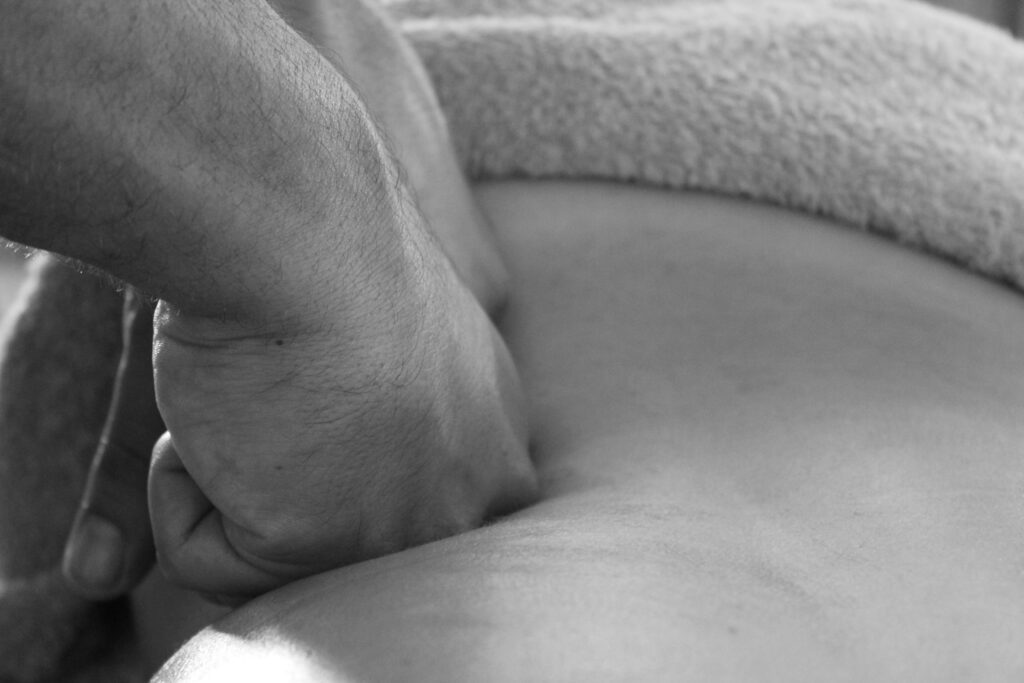
Massage Therapy uses multiple techniques to help improve function and restore health to a variety of patients. The assessment and care is determined by the therapist. She will look at a person’s range of motion, flexibility, limitations, alignment, and discomfort levels.
Myofascial Release– A hands-on technique used to manage myofascial pain. “Myo” means muscle. “Fascial” refers to the connective tissue that covers and supports the muscles throughout your entire body. During myofascial release therapy, your therapist doesn’t focus specifically on your muscles. They focus on releasing tension in your fascial tissues.
Trigger Point Therapy– Trigger point therapy is an incredibly effective way to relieve pain and tension in the body. By applying pressure to specific points on the body, trigger point therapy can help to release tight muscles, improve circulation, and reduce pain.
Deep Tissue– Help relieve muscle pain and stiffness, chronic pain, and pain associated with musculoskeletal issues like strains, sports injuries, and plantar fasciitis. Improved mobility, stress relief, improved circulation, faster healing, increased muscle strength, are some of the notable changes deep tissue relief has to offer.
Cupping– Active cupping is a therapeutic technique that involves the use of specialized cups placed on the skin to create suction. Unlike traditional cupping, where stationary cups are left in place for a period, active cupping involves moving the cups over the skin in a gliding or sliding motion.
Passive Stretching– Human movement is dependent on the amount of range of motion (ROM) available in synovial joints. In general, ROM may be limited by 2 anatomical entities: joints and muscles. Active stretching generally involves moving a limb through its full range of motion to the end ranges and repeating several times. Passive stretching is a technique in which you are relaxed and make no contribution to the range of motion.
Manual Lymphatic Drainage (MLD) – Often referred to as Lymphatic or Lymph drainage, is a hands-on technique that involves the use of long rhythmic strokes aimed at restoring the lymphatic system to optimal functioning. It is non-invasive and uses hand movements to gently activate lymph vessels and nodes.
The lymphatic system acts as a filtration mechanism that protects our bodies from illness causing invaders such as bacteria, viruses, metabolic waste, cancer cells, and damaged cells.
Lymphatic drainage helps to promote faster removal of debris in our bodies and can help boost out immune system.
We use the Vodder method of Manual Lymphatic Drainage because it is considered the gold standard in the medical and therapeutic setting.
Who should get MLD?
- Pre & Post-operative patients
- Primary and Secondary Lymphedema
- Fortifying the lymphatic system, especially when more susceptible to illness (i.e. post travel, winter months, etc.)
- Swelling due to sprains, tears, fractures, overuse, or sports recovery
- Anxiety & Stress
- Pre & Post fasting
- Need a deep & calming relaxation
Cranial-Sacral Massage – This technique uses a gentle touch to create rhythmic movements of the skull bones. This therapy focuses on the joints of the skull, neck, jaw, and spinal column.
The benefits include but are not limited to relief from headaches, migraines, TMJ pain, neck pain, and back pain. It helps with stress reduction, increased emotional wellbeing, and deep relaxation.
Prenatal Massage – This technique is designed to help pregnant women by alleviating discomforts and promoting overall well-being. The muscles worked are specifically tailored to address the stresses associated with pregnancy. Prenatal massage helps stimulate circulation and reduce swelling while allowing much needed relaxation for this population.
How often should you get a massage?
It is recommended a massage is provided at least once every two to three weeks to help aid in healthy tissue repair and reduce pain felt from the intensive workouts that the body is going through. Here are a few keyways that massage can help aid in healing:
- Back and neck stiffness Pre and Post Operations
- Pain management and circulation
- Preventive maintenance
- Sports injuries (old and new)
- Soft Tissue Inflammation
- Stress Limited Range of Motion
